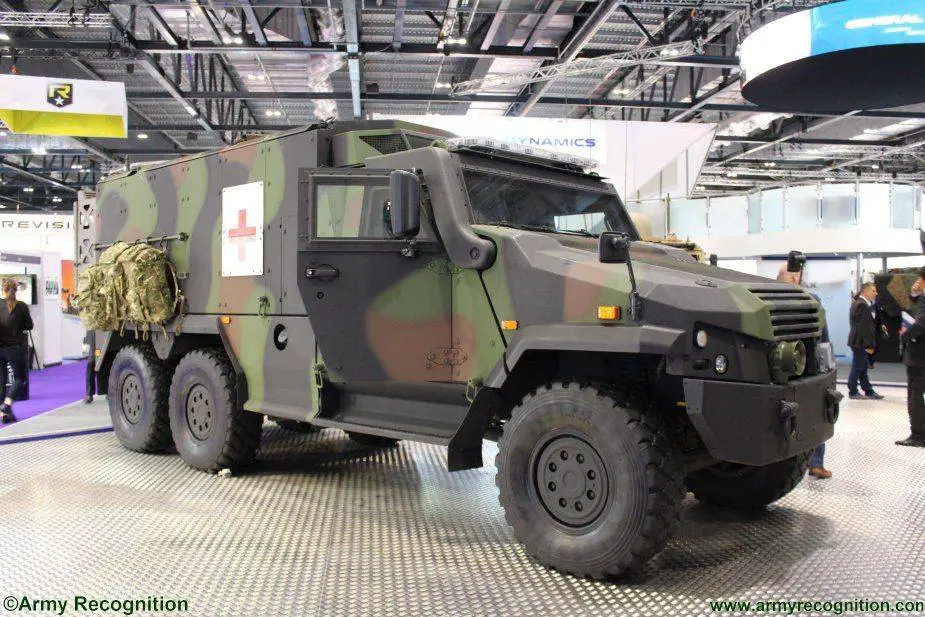According to a Tweet released by Nicholas Drummond on June 3, 2020, GDELS (General Dynamics European Land Systems) will propose its Eagle 6x6 armored vehicle in ambulance configuration for the British army program MRV-P (Multi-Role Vehicle – Protected) Block 2.
Follow Army Recognition on Google News at this link

Eagle 6x6 ambulance armored vehicle at DSEI defense exhibition in the United Kingdom. (Picture source Army Recognition)
The Multi-Role Vehicle – Protected (MRV-P) is the UK Army requirement for a lightly armored (or protected) utility vehicle to replace the Panther Command & Liaison vehicle, Husky Tactical Support Vehicle (Light), and Vector (Protected Pinzgauer) – all were purchased via UOR processes. MRV-P could also replace un-armoured LandRovers in some command and liaison roles and has the potential to replace the Foxhound LPPV in the future.
The requirement is split into groups or packagers; the Package 1 requirement is for the command & liaison and utility roles, Package 2 for an ambulance and troop transport, and Package 3 is for a light recovery vehicle.
The Eagle 6x6 is a light tactical vehicle produced by the Swiss Company Mowag now part of GDELS (General Dynamics European Land Systems). The vehicle was unveiled in June 2012 during Eurosatory, defense exhibition in Paris. The vehicle is already in service with the German army in ambulance configuration.
The Eagle 6x6 is a modular vehicle and can be easily configured as APC (armored personnel carrier), ambulance, command and control vehicle, reconnaissance, NBC detection, mortar carrier, recovery and logistics transport vehicle.
The Eagle 6x6 is made on armor steel offering protection against firing of small arms and artillery shell splinters. It can be fitted with add-on armor kits made of steel or composite material to increase the protection against RPG (Rocket Propelled Grenades) threats.
The ambulance version has a crew cabin at the front and the rear part of the vehicle team is fitted with four seats and can carry two stretches. The vehicle can also accommodate a medical team and modern medical equipment to provide intensive care of critically injured soldiers on the battlefield.














